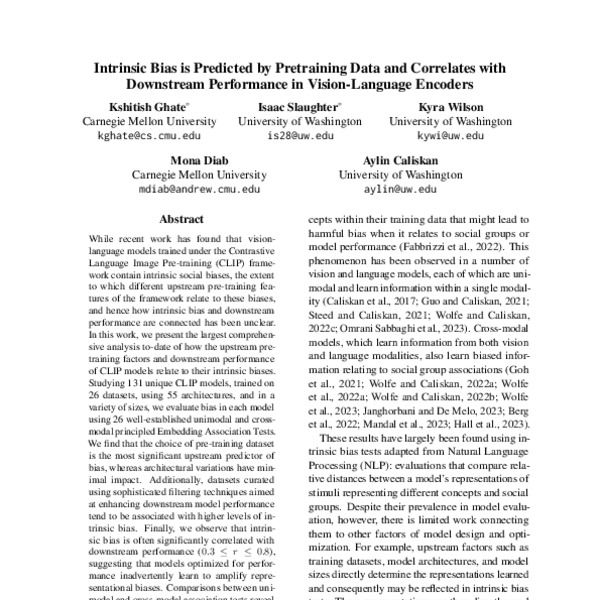https://kshitishghate.github.io/
1️⃣Gender bias over-representation in AI bias research 👫
2️⃣Stable Diffusion's skin tone bias 🧑🏻🧑🏽🧑🏿
3️⃣Limitations of human oversight in AI hiring 👤🤖
Let's chat if you’re at AIES or read below/reach out for details!
#AIES25 #AcademicSky
1️⃣Gender bias over-representation in AI bias research 👫
2️⃣Stable Diffusion's skin tone bias 🧑🏻🧑🏽🧑🏿
3️⃣Limitations of human oversight in AI hiring 👤🤖
Let's chat if you’re at AIES or read below/reach out for details!
#AIES25 #AcademicSky
With EVALUESTEER, we find even the best RMs we tested exhibit their own value/style biases, and are unable to align with a user >25% of the time. 🧵

With EVALUESTEER, we find even the best RMs we tested exhibit their own value/style biases, and are unable to align with a user >25% of the time. 🧵
(📷 xkcd)

(📷 xkcd)
Work done with amazing collaborators
@isaacslaughter.bsky.social,
@kyrawilson.bsky.social, @aylincaliskan.bsky.social, and @monadiab77.bsky.social!
Catch our Oral presentation at Ballroom B, Thursday, May 1st, 14:00-15:30 pm!📷✨

Work done with amazing collaborators
@isaacslaughter.bsky.social,
@kyrawilson.bsky.social, @aylincaliskan.bsky.social, and @monadiab77.bsky.social!
Catch our Oral presentation at Ballroom B, Thursday, May 1st, 14:00-15:30 pm!📷✨
We carried out the largest systematic study so far to map the links between upstream choices, intrinsic bias, and downstream zero-shot performance across 131 CLIP Vision-language encoders, 26 datasets, and 55 architectures!

We carried out the largest systematic study so far to map the links between upstream choices, intrinsic bias, and downstream zero-shot performance across 131 CLIP Vision-language encoders, 26 datasets, and 55 architectures!
We carried out the largest systematic study so far to map the links between upstream choices, intrinsic bias, and downstream zero-shot performance across 131 CLIP Vision-language encoders, 26 datasets, and 55 architectures!

We carried out the largest systematic study so far to map the links between upstream choices, intrinsic bias, and downstream zero-shot performance across 131 CLIP Vision-language encoders, 26 datasets, and 55 architectures!
@aylincaliskan.bsky.social and I wrote a blog post about how to make resume screening with AI more equitable based findings from our work presented at AIES in 2024. Major takeaways ⬇️ (1/6)
www.brookings.edu/articles/gen...

@aylincaliskan.bsky.social and I wrote a blog post about how to make resume screening with AI more equitable based findings from our work presented at AIES in 2024. Major takeaways ⬇️ (1/6)
www.brookings.edu/articles/gen...
Kindly share!
apply.interfolio.com/162834
Priority review deadline: 3/28/2025
Kindly share!
apply.interfolio.com/162834
Priority review deadline: 3/28/2025
go.bsky.app/NhTwCVb
go.bsky.app/NhTwCVb

